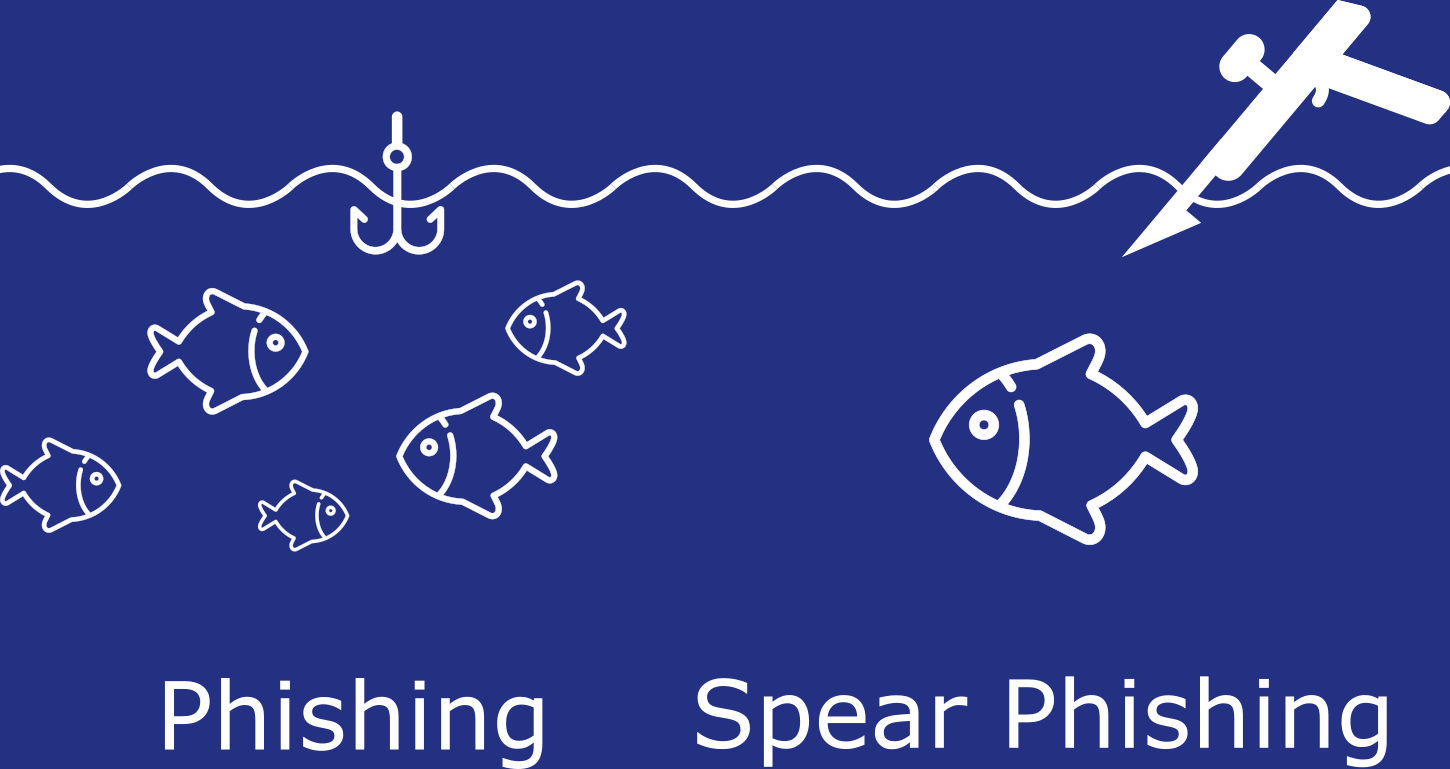- Get link
- X
- Other Apps
- Get link
- X
- Other Apps
How many people can really recognize phishing or spear-phishing emails, or even see the different nuances? Both threats are similar, but also different enough to represent two distinct attack modes. As we like to say again and again: Intensive awareness is the key to being vigilant in the cybersecurity area. Stop give price to a phishing attack by antivirus software
What is phishing?
Let's start with the strange notation. “Phishing” was called by the admirers of the “ Phone Phreaks“, The notorious first generation of hackers who were at the helm in the 60s and 70s. The Phone Phreaks started a long tradition of cyber warfare with a ridiculously simple technique: They blew a toy pipe that was included with the Cap'n Crunch cereal into a phone to simulate a Hertz tone and the circuitry of the telephone companies to outsmart. With that, they managed to get hold of a free phone call. As ridiculous as it may seem to us today, at the time it was a hacking innovation that exploited a weak point in the switching centers based on in-band signaling and inspired a whole generation of phone phreaks.
Phishing is a hacking method that is the digital equivalent of ejecting a network. In particular, phishing means sending e-mails intended to trick a user into clicking on a URL that leads to a web form or a start page that spoofs a well-known brand such as Microsoft. The webform is designed to collect personal information such as login credentials. Phishing emails usually contain statements such as “Your account is blocked”, “Please update your password” or “Please update your account information”.
In some cases, the fake web forms are almost impossible to tell apart from the real ones. However, the URLs themselves can contain clues as to what is lurking beneath the surface. For example, a phishing URL that claims to be from Bank of America could take you to a page with the domain name “www.bankofamericaincu.co” (the bank's actual domain name is www.bofa.com). There you may give your login details, social security number, or other personal information to the criminals who set up the site.
Phishing is also widely used to steal credentials for cloud applications, such as Office 365. A phisher sends an email asking the user to sign in to their Office 365 account to access the platform, download a shared file, or update their account information. The user clicks a URL that takes them to a fake Microsoft website where the credentials are collected, similar to the Bank of America example above.
What Is Spear Phishing?
Generic phishing involves sending a large number of emails and ejecting a larger network. Phishing campaigns do not target individual victims; the attack is aimed at hundreds, sometimes even thousands, of recipients. Spear phishing, on the other hand, is extremely targeted and targets a single person. Hackers pretend to know you. It's personal.
A spear-phishing attacker is after something specific. Business Email Compromise is a common scam in which a cyber criminal pretends to be a senior executive with authority to request transfers (to fraudulent companies), transfer changes, or W2 information. To establish convincing contact with you, the attacker may use social engineering techniques and pretend to be someone you know, such as a colleague or business friend. The attacker can do this by scouting you on the Internet and on social media, or by collecting information about you through data breaches using peer-to-peer protocols (P2P), such as BitTorrent.
Consider the following spear phishing scenario: You are Bob and you work for Joe Smith, your company's CEO. A spear phisher sees you on LinkedIn and notices that you are friends with Joe. He follows you on Facebook, finds out which your favorite team is, and reads about a project you are working on in the office.
The attacker now creates an email account under the name joesmith21@gmail.com. While the real Joe is on vacation - information the phisher found on Facebook - the fake Joe sends you an email saying, "Um, Bob, I'm on vacation, but you have $ 100,000 to pay to a contractor Transfer China for our project. Please take care of it immediately. Here are the transfer details. "
If you are not very vigilant, you could actually transfer the money. This is a type of Business Email Compromise, and it happens more often than you would think. Even people who have been specially trained not to do just that get nervous when the "boss" urges them to do something. It's Joe, after all, not some stranger ... at least you think so.
Why Is It So Important to Know About Phishing and Spear Phishing?
Spear phishing attacks are at the core of many, particularly serious and costly data breaches. In 2018, according to the FBI's 2018 Internet Crime Report, Business Email Compromise scams cost US companies $ 1.2 billion, while phishing cost US victims more than $ 48 million.
Email filters can stop phishing emails with known phishing URLs that are coming in bulk. If an email contains an attachment with a known signature, a traditional email filter can intercept that too. However, if a phishing email is an unknown threat, or if you receive a personal email from Bob that does not contain a URL or attachment, it will inevitably slip through most of the filters.
Phishing, and spear phishing in particular, therefore contains a dangerous but extremely effective attack vector. Still, it is possible to defend yourself. For example, end-user awareness and training can help users identify phishing or spear-phishing emails. Solutions such as Protegent360's Total Security also use artificial intelligence, including machine learning, to detect malicious emails, URLs and attachments, and attempts to spoof the identity of colleagues and business friends.
- Get link
- X
- Other Apps

Comments
Post a Comment